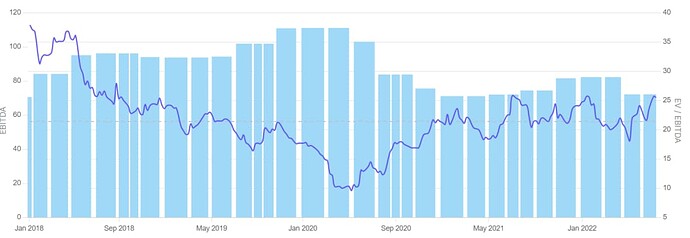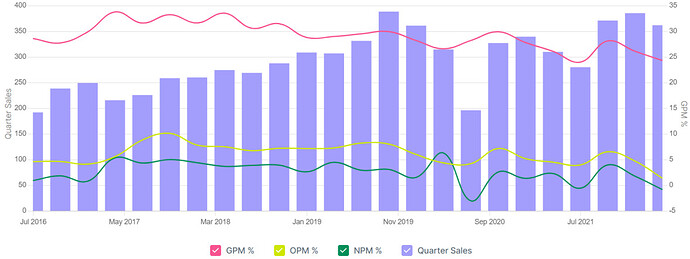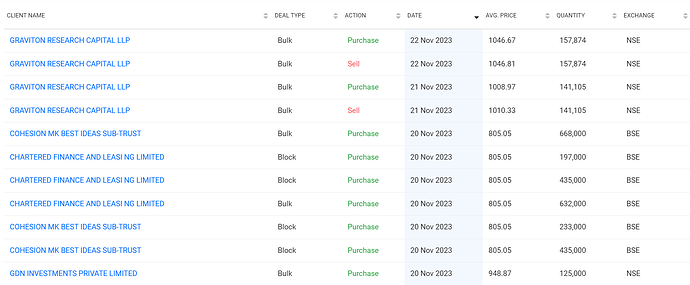Prataap Snacks is one of the top players in the Indian snack food companies in terms of revenue and amongst the fastest growing company in the organised snack market. The company sells its product under the brand name “Yellow Diamond” with diversified product portfolio including traditional and western snacks.
Company products has 4 basket of products, Extruded Snacks, Potato Chips, Namkeen and Sweets. Its product portfolio consists of Extruded Snacks including Puffs, Rings and Pellets products, Chips including fried, sliced chips / crisps, and Namkeen including moong dal, masala or fried nuts, sev and bhujia. Sweets including cup cakes.
In a short time span of 12-13 years the company features amongst the top 5 organised players, and has witnessed its market share catapulting 4x from less than 1% in 2010 to 4% plus in 2018 (Market leader with 100+ years in market - Haldiram has a 20% market share). This is commendable as many of its peers, despite being in the business for over 20-30 years, have failed to transcend regional boundaries.
They were the first company in India that was offering different grammage (grams per packet) in different areas. They were offering a 16-gram Rs 5 pack in Delhi, but a 13-gram pack in Guwahati. When Frito-Lay was offering 22 grams in a Rs 5 pack, Prataap Snacks offered 30 grams for the same amount (offering superior value proposition for price conscious middle-class Indian consumers), which has helped the company to make a mark in this high intensely competitive space. Its pricing strategy pushed several bigger companies to also offer value packs in an effort to stay ahead in the market.
Prataap has a pan-India distribution reach via: (a) three-tier distribution structure of stockists, distributors & retailers. Prataap’s products reach 17 lakh retail touch points (almost 60% of PepsiCo’s and 35% of Britannia’s reach) served by 13 manufacturing plants with a combination of owned as well as outsourcing facilities.
Their revenue share from different regions, East with 34%, west with 30%, north with 25%, south with 11%.
In the last 3 years sales has grown at 15% CAGR.
Future Growth Drivers::
-
Avadh’s acquisition gives entry in large and fast growing Gujarat market.
Avadh is the fourth-largest player in Gujarat, which is highly regional and with no presence of any national player. On the opportunity dynamics front, Gujarat is home to 4% of India’s population, but consumes ~13% of packaged snacks. We believe, this acquisition is a great fit for Prataap, providing breakthrough in this market.
Avadh has a portfolio of , pellets (fryums) and namkeens which complements the overall portfolio of Prataap.Avadh posted a turnover of around INR 140 crore in FY18, with operating profit stood at roughly ₹ 11 crore.
80% stake in Avadh ws bought for ₹ 148 crore in Aug 2018, remaining 20% stake will be taken after 4 years.Before acquisition, Prataap has no presence in Gujarat,Rajasthan, Maharashtra (big markets for salty snacks), so with Avadh acquisiton, it entered those markets.
This year(FY2020) they made more than 200 crores from Avadh. -
Entry in rapidly growing sweet category to accelerate growth by sweating assets.
The overall market for western sweets, especially chocolate-based confectioneries, is pegged at INR 2,800-3,000 crore and the same is expected to grow ~15-18% over the next 4-5 years. Sensing this, Prataap too has entered this segment with the launch of three products under the Rich feast brand.– (a) Yum Cake (b) Choco Vanilla Cake and ©
Cookie cakes in three different flavor- (chocolate, Vanilla and Tuti fruity).
The company has already invested INR 60 crore in land, building and production line for the sweets category. And, it is planning to incur additional INR 20 crore to expand and introduce new lines.
Sweets, as a category, is a high gross margin business—overall gross margin is >40% versus 30-35% in the snacks category
Along with higher gross margin, the volume weight ratio for sweets is favourable, leading to lower logistics cost for the company as well as distributors (logistics cost for
chips is ~7-8%, while for sweets it is ~5%). A combination of higher gross margin and lower freight cost results in higher EBITDA margin for the sweets category. Which is almost is 2x salty snacks’ margin.
Here also prataap is providing value for money, While Pillsbury offers 11gm for INR 5, Prataap offers 16 gm for INR 5
Currently, this category is clocking monthly turnover of INR 2.0-2.5 crore. Going forward, management aims to launch new versions and flavours of cookie cake, cookie biscuits and layer cake, which will propel monthly turnover to ~INR 5-8 crore over the next 4 years. Prataap aims to increase the share of sweets in its overall portfolio to ~10% over the next 3 years. -
Outsourced model to drive higher asset turns and boost ROCE
In the snacks business, particularly chips and extruded snacks, it is imperative for manufacturing facilities to be closer to the market. This is largely to ensure freshness, high fill rate and also control freight cost as chips and snacks being light weight, the transportation cost is high. Hence, a successful pan-India player typically needs several small manufacturing facilities.Hence, Prataap is gearing to expand its manufacturing base via the third-party outsourcing model.Currently, the company has around 13 manufacturing facilities spread across India, of which 5 are owned and balance 8 are outsourced. Contract manufacturing constitutes ~10-12% to total revenue, which is likely to increase to 20-25% over the next 3 years.
Along with lower logistics costs, outsourcing results in lower capex, thus leading to an asset-light model. This yields better margins and asset turns, thereby driving higher ROCE.
Contribution of 3P manufacturing facility in sales increased from 11% in FY’19 to 18% in FY’20.
Key Concerns::
- Raw material (key raw materials are palm oil and packaging laminate) forms around 67-68% of the total revenue for a value for money snacks player like Prataap foods. Any continuous upmove in the prices of the key raw materials would lead to impact on the Gross as well as EBITDA margin, impacting the profitability.
This year palm oil prices increased to 90RS/kg, it is why it posted very less margins this year. - Highly competitive space.
Last 5 years Financials::
| Narration | Mar-14 | Mar-15 | Mar-16 | Mar-17 | Mar-18 | Mar-19 | Trailing |
|---|---|---|---|---|---|---|---|
| Sales | 445.61 | 558.80 | 757.19 | 893.95 | 1,017.35 | 1,170.61 | 1,393.79 |
| Expenses | 425.41 | 524.70 | 700.35 | 851.79 | 929.86 | 1,087.26 | 1,300.10 |
| Operating Profit | 20.20 | 34.10 | 56.84 | 42.16 | 87.49 | 83.35 | 93.69 |
| Other Income | 1.19 | 0.57 | -5.41 | 2.74 | 7.49 | 10.81 | 9.20 |
| Depreciation | 11.68 | 15.34 | 17.99 | 25.47 | 30.42 | 37.64 | 61.74 |
| Interest | 4.73 | 6.33 | 5.88 | 4.57 | 2.90 | 0.86 | 7.47 |
| Profit before tax | 4.98 | 13.00 | 27.56 | 14.86 | 61.66 | 55.66 | 33.68 |
| Tax | -0.40 | 3.10 | 0.19 | -5.72 | 17.48 | 11.02 | -13.25 |
| Net profit | 5.38 | 9.90 | 27.37 | 20.58 | 44.18 | 44.64 | 46.92 |
| EPS | 179.33 | 330.00 | 912.33 | 10.77 | 18.80 | 19.00 | 20.01 |
Management Commentary::
Aiming for 2000 crores in 3 years. 9 Percent margin in 4 quarters.
Promoters holds 71.5 perc, out of that Sequoia Capital holds close to 48 perc, rest 23 perc is by other promoters.
Malabar fund holds close to 6 perc.
Faering capital holds - 2 perc.
Disclosure:: Initiated tracking position.



